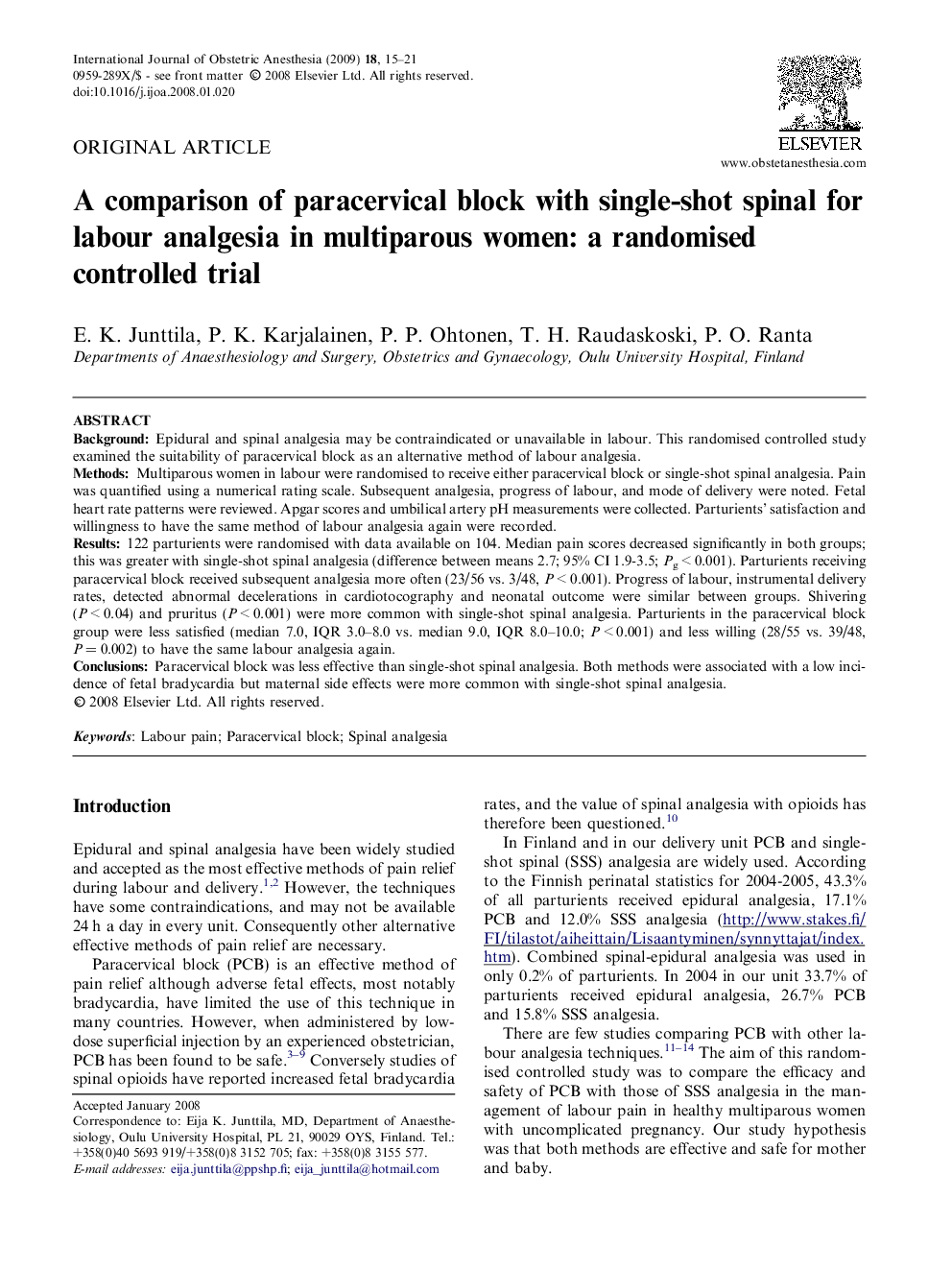| Article ID | Journal | Published Year | Pages | File Type |
|---|---|---|---|---|
| 2758622 | International Journal of Obstetric Anesthesia | 2009 | 7 Pages |
BackgroundEpidural and spinal analgesia may be contraindicated or unavailable in labour. This randomised controlled study examined the suitability of paracervical block as an alternative method of labour analgesia.MethodsMultiparous women in labour were randomised to receive either paracervical block or single-shot spinal analgesia. Pain was quantified using a numerical rating scale. Subsequent analgesia, progress of labour, and mode of delivery were noted. Fetal heart rate patterns were reviewed. Apgar scores and umbilical artery pH measurements were collected. Parturients’ satisfaction and willingness to have the same method of labour analgesia again were recorded.Results122 parturients were randomised with data available on 104. Median pain scores decreased significantly in both groups; this was greater with single-shot spinal analgesia (difference between means 2.7; 95% CI 1.9-3.5; Pg < 0.001). Parturients receiving paracervical block received subsequent analgesia more often (23/56 vs. 3/48, P < 0.001). Progress of labour, instrumental delivery rates, detected abnormal decelerations in cardiotocography and neonatal outcome were similar between groups. Shivering (P < 0.04) and pruritus (P < 0.001) were more common with single-shot spinal analgesia. Parturients in the paracervical block group were less satisfied (median 7.0, IQR 3.0–8.0 vs. median 9.0, IQR 8.0–10.0; P < 0.001) and less willing (28/55 vs. 39/48, P = 0.002) to have the same labour analgesia again.ConclusionsParacervical block was less effective than single-shot spinal analgesia. Both methods were associated with a low incidence of fetal bradycardia but maternal side effects were more common with single-shot spinal analgesia.
